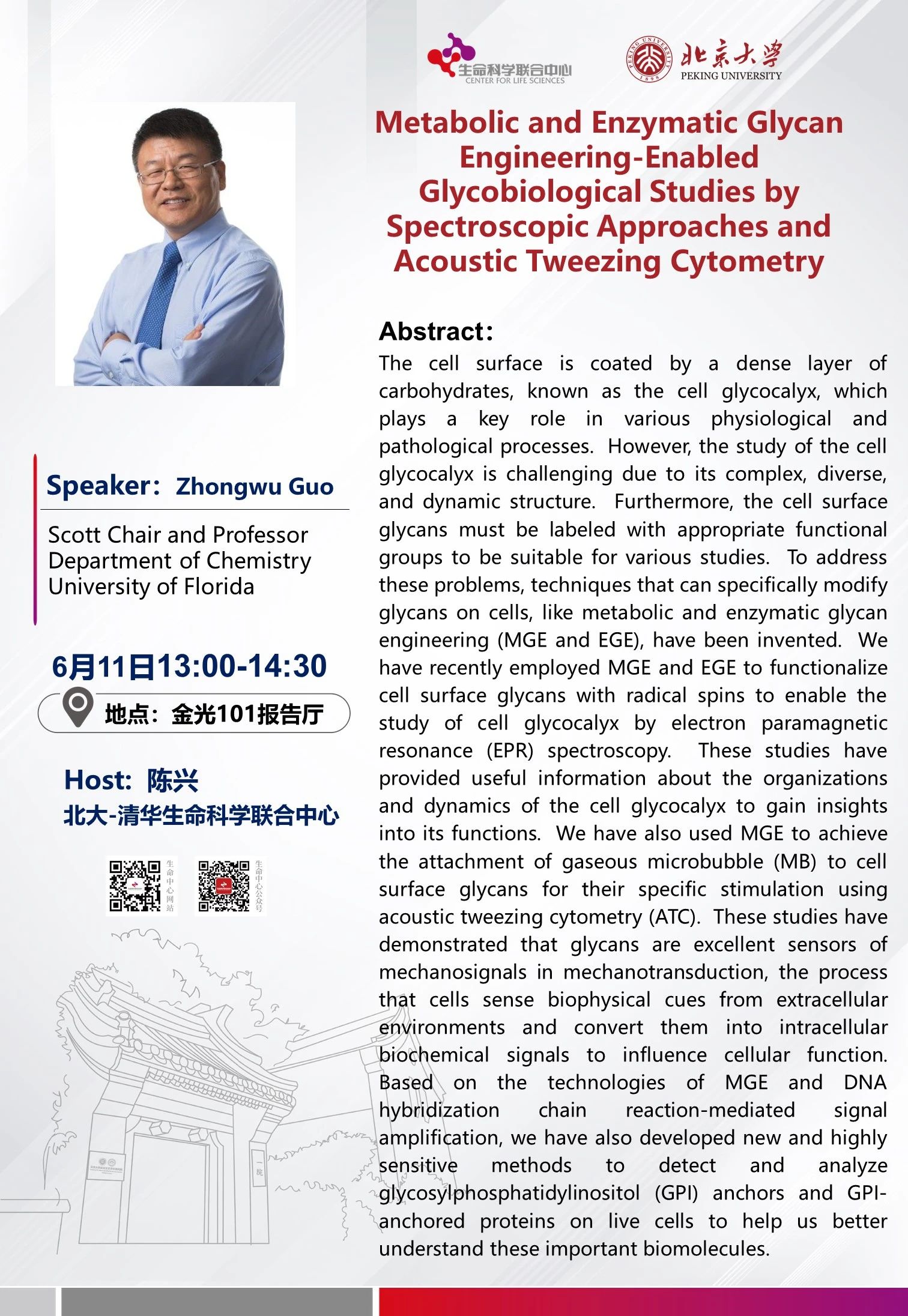
Speaker: Zhongwu Guo, Scott Chair and Professor, Department of Chemistry, University of Florida
Time: 13:00-14:30 p.m., Jun 11, 2024, GMT+8
Venue: Rm. 101, Jin-Guang Life Science Building, PKU
Abstract:
The cell surface is coated by a dense layer of carbohydrates, known as the cell glycocalyx, which plays a key role in various physiological and pathological processes. However, the study of the cell glycocalyx is challenging due to its complex, diverse, and dynamic structure. Furthermore, the cell surface glycans must be labeled with appropriate functional groups to be suitable for various studies. To address these problems, techniques that can specifically modify glycans on cells, like metabolic and enzymatic glycan engineering (MGE and EGE), have been invented. We have recently employed MGE and EGE to functionalize cell surface glycans with radical spins to enable the study of cell glycocalyx by electron paramagnetic resonance (EPR) spectroscopy. These studies have provided useful information about the organizations and dynamics of the cell glycocalyx to gain insights into its functions. We have also used MGE to achieve the attachment of gaseous microbubble(MB) to cell surface glycans for their specific stimulation using acoustic tweezing cytometry (ATC).These studies have demonstrated that glycans are excellent sensors of mechanosignals in mechanotransduction,the process that cells sense biophysical cues from extracellular environments and convert them into intracellular biochemicalsignals to influence cellular function. Based on the technologies of MGE and DNA
hybridization chain reaction-mediated signal amplification, we have also developed new and highly sensitive methods to detect and analyze glycosylphosphatidylinositol(GPI) anchors and GPI- anchored proteins on live cells to help us better understand these important biomolecules.
Source: Center for Life Sciences
